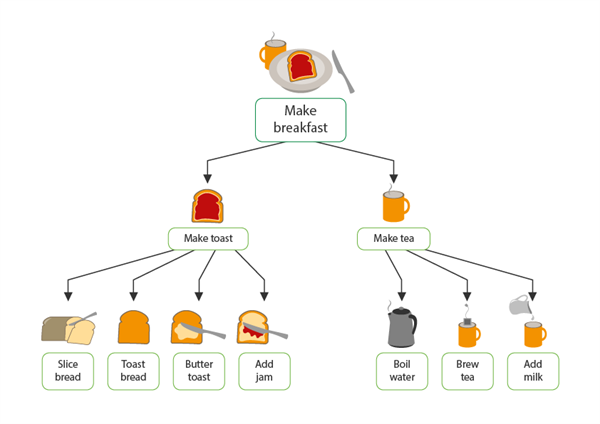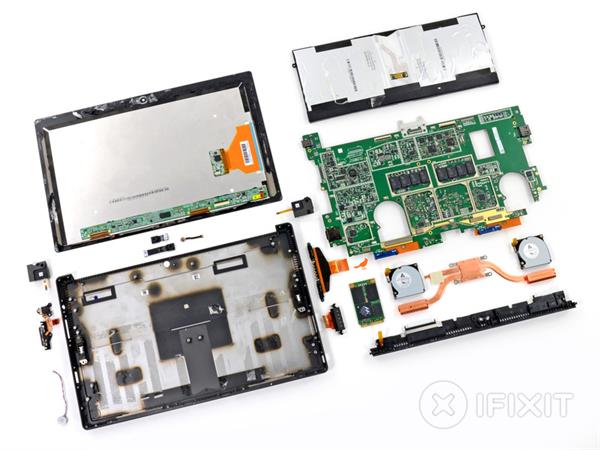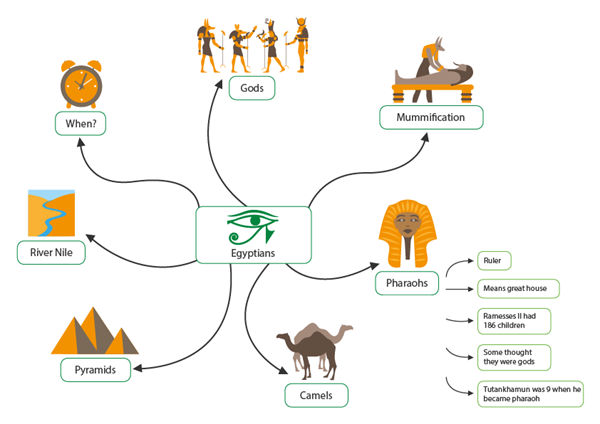What is decomposition?
In computing, decomposition is the process of breaking down a task into smaller, more-manageable parts. It has many advantages. It helps us manage large projects and makes the process of solving a complex problem less daunting and much easier to take on.
With decomposition, a task can be tackled by several people working together as a team, each member contributing their own insights and skills to particular aspects of the project.
As a simple example, making breakfast can be decomposed into a number of smaller tasks, as below. Two people could make this breakfast at the same time, one making tea and one toast.

Two people could make this breakfast at the same time: one could make the tea and one the toast
An illustration of a plant can be decomposed into its constituent parts, and each of those can be further decomposed for extra detail:

A labelled diagram of a flowering plant. We find out more as we decompose.
Why is decomposition important?
Decomposing problems into their smaller parts is not unique to computing: it’s quite standard in engineering, in design and in project management.
Software development is a complex process, and so the ability to break down a large project into its component parts is essential: think of all the different elements that need to be combined to produce a program like PowerPoint.
The same principle is true of computer hardware: smartphones and laptop computers are each composed of many components, produced independently by separate manufacturers before being assembled into the finished product.

A tablet can be broken down (decomposed) into smaller components. (With thanks to iFixit.com.)
What does decomposition look like in the curriculum?
Putting on a school play or a cake sale, creating a news report, tackling a maths problem, making a sandwich: any task or project will need to be decomposed into smaller, more-manageable parts. Decomposition is everywhere in school practice.
Pupils are always being asked to find out more; whenever they’re labelling drawings, adding detail to concept maps, creating instructions, sketching lifecycles or marking out timelines, they’re breaking down something and thinking about detail, developing their decomposition skills.
The concept map below is a decomposition of children’s knowledge of the ancient Egyptians.

In a concept map, pupils can add detail to their knowledge and understanding of the ancient Egyptians.
Pupils’ decompositions might include just the things they currently know about. They should learn to check that they haven’t neglected aspects of a topic. They can consider further decomposing each aspect into sub-parts.
A computer game might be decomposed into plot, characters and setting. Next, the characters could be decomposed into actions and appearance, and the setting into background, obstacles and scoring objects. In developing a robotic toy, pupils will consider the hardware components – both individually and as a system – and the algorithms and code required. In computing, technology = hardware + algorithms + code.


